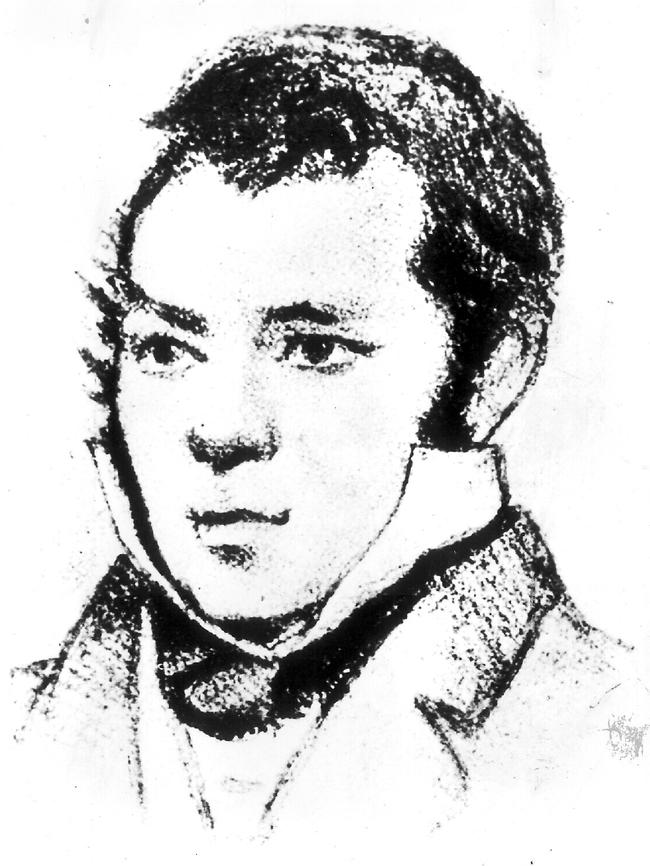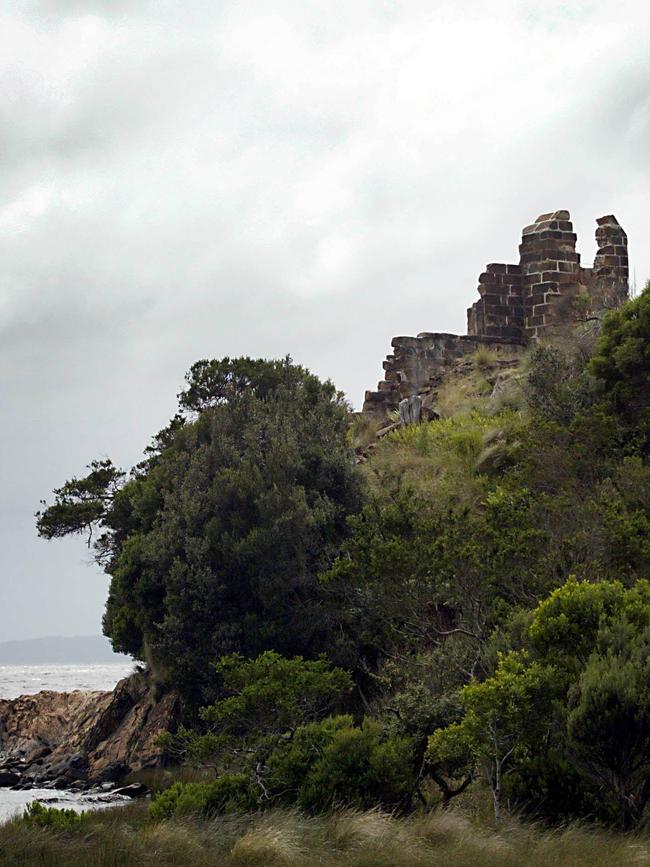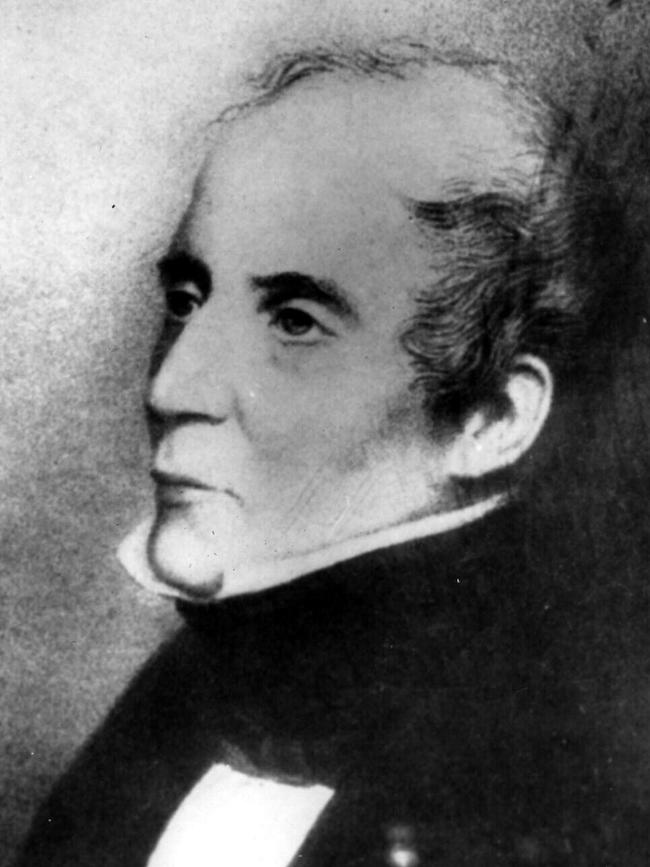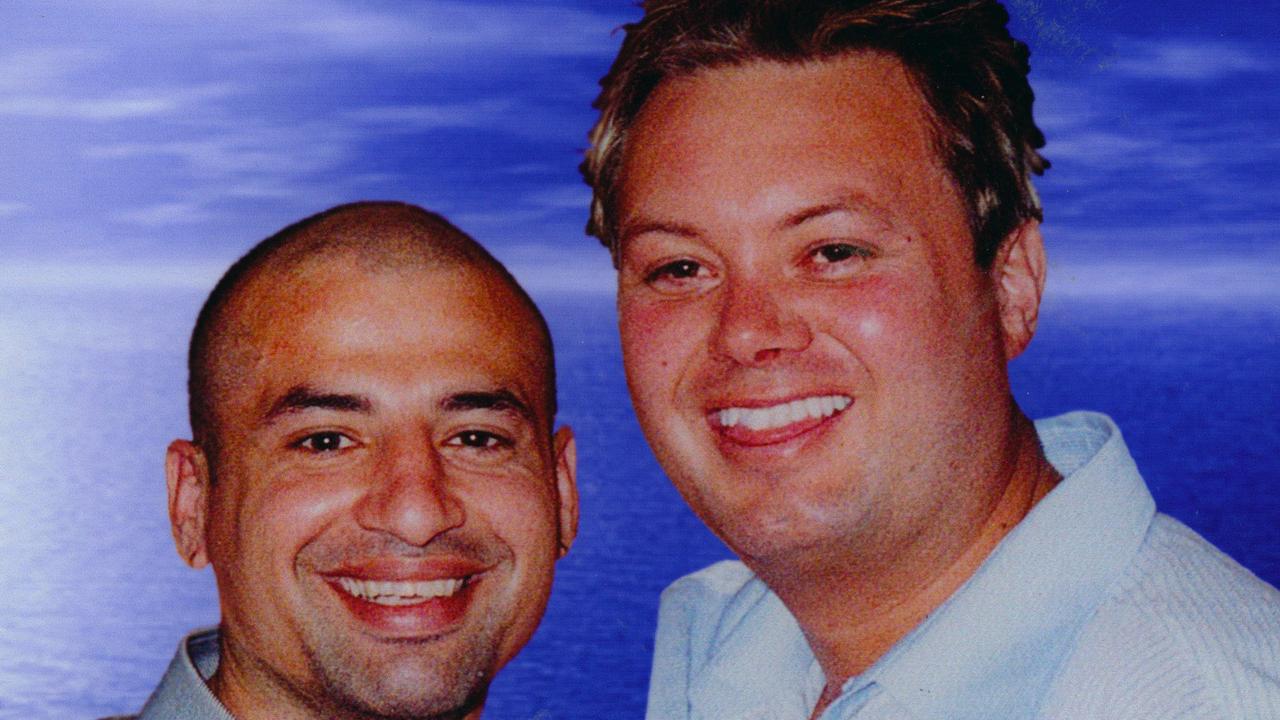Tasmania’s Gentleman Bushranger turns tables on colonial rulers to public’s delight
WHEN wanted posters started appearing for Matthew Brady’s gang, the “Gentleman Bushranger” knew how to keep the public on side — cheekily creating his own wanted posters for Governor George Arthur and offering 20 gallons of rum.

Book extract
Don't miss out on the headlines from Book extract. Followed categories will be added to My News.
POLICE magistrates like Newry, Northern Ireland-born William Gunn, who chased after bushrangers during Tasmania’s convict days, rarely got any praise.
Not from the public, anyway, especially if the man they were after was someone like Matthew Brady, the man they called “the Gentleman Bushranger”.

More often than not, bushrangers were simply men transported to Australia for committing fairly minor crimes — Brady had stolen butter, bacon, sugar, rice and a basket — who tired of being cooped up in gaol or in service and headed for the hills of which, luckily for them, there are plenty in Tasmania. They then sought food and supplies from homesteaders they came across in order to stay alive. Brady’s popularity meant he rarely had to insist.
He was renowned for not hurting anyone unless in self-defence and imposed the same strict rules on his gang members, once kicking offsider James McCabe out of the gang for threatening to hurt a woman.
True Crime Australia: Daring and deadly jail breaks
Our Criminal History: Why Ned Kelly is no hero
Born in Manchester in 1799 of Irish parents, Brady was 21 when he was transported. But his persistent efforts to escape from prison were not appreciated and in four years he was given 350 lashes for trying.

Brady was sent to Sarah Island and in June 1824 he did succeed in escaping. Along with 14 others, he stole a boat and headed south in rough seas around the south of Tasmania towards an area that was familiar to them, Hobart Town on the River Derwent.
It was the stunts he pulled off that allowed him to remain free and made the general public warm to him.
When Governor Arthur put “wanted” posters up for the gang, Brady put up similar posters of his own saying, “It has caused Matthew Brady much concern that such a person known as George Arthur is at large. Twenty gallons of rum will be given to any person that can deliver his person to me.”
The public loved it, and for some time “bushranging mania” seemed to grip the community.
With soldiers everywhere out looking for him, Brady one day went into Hobart and boarded the mail coach to Launceston, having pre-arranged with gang-members that they should rob it at a certain spot along the road.
They also once captured a whole township, Sorell. They robbed 12 members of the Hobart gentry who were having dinner there and put them in the lock-up together with soldiers they came across who had just returned from looking for Brady.
How could William Gunn compete with that?
Born on 6 September 1800, the eldest child of Lieutenant William Gunn and his wife, Margaret, he was 22 when he sailed for New South Wales where he planned to join the army.
Instead, he was waylaid in Hobart Town where Lieutenant-Governor William Sorell talked him into staying in Van Diemen’s Land, granting him 400 acres (162ha) near Sorell where, at 29, he would marry Frances Arndell and begin work on a family of nine children.

Spending three years in command of soldiers and chasing after bushrangers like Brady, also still in his 20s, it was in November 1825 when Gunn was badly wounded by a shot from a Brady gang-member that led to his arm being amputated.
He had not got his man and was forced to settle for a colonial pension for his “patriotic exertions”.
Now away from the chase he was made superintendent of the Prisoners’ Barracks in Hobart and in 1832 ran the Male House of Correction, rising in rank in the Convict Department in Launceston until his retirement, which heralded the end of transportation.
Coming from the right side of the tracks, Gunn was widely respected for being brave and generous, giving both land and money to the Anglican and Congregational churches at Broadmarsh, just north of Hobart.
William Gunn died on June 10, 1868.
One historian, K. L. Read, ended a biography of him with a genteel observation, hardly recognising the rough life “the hired Gunn” once knew, by saying that his Launceston home Glen Dhu “was noted for its lawns and gardens; the rose garden was claimed to be the best in Australia”.
MATTHEW Brady would be talked about in a different way.

The more popular Brady became, the more people had wanted to join his gang and the harder it became to control them.
At one time, there were 25 in his gang and a hundred others trying to emulate him. One, an escaped convict who had been a painter and decorator in Bristol, England, called Thomas Jeffries, joined the gang but was immediately forced to leave when the other gang members found out how violent he was.
While Brady had escaped from Macquarie Harbour rather sensibly by sea, Jeffries had attempted it the (cannibal convict) Alexander Pearce way and, likewise, had managed to stay alive while on the run by eating one of his friends.
Fear, hunger, shame: The Cannibal Convict
Heading across mountainous country and dense rainforests with two others, Russell and Hopkins, Jeffries suggested they toss a coin to see which of them should be eaten by the others. Russell lost and went to sleep, thinking it had been a joke.
“Jeffries shot Russell in the head,” wrote Allan Nixon in 100 Australian Bushrangers, “cut up the corpse and lived on it for four days”.
Eventually, he reached the settled areas of the state’s north where his vicious spree continued.
He called himself “Captain Jeffries” and wore a kangaroo skin cap, long black coat and red vest.
On Christmas Day in 1825 his gang held up two farm workers.
One ran away, but Jeffries wounded the other one before catching up with him and shooting him again.
They raided the homestead of a landowner called Mr Tibbs — he complained and they shot him and his stockman. They then “forced Mrs Tibbs, who had a five-month-old baby at her breast, to accompany them into the bush,” wrote Nixon.

“When she found difficulty in keeping up with them, Jeffries grabbed the baby from her arms and smashed its head against a tree trunk” and soon afterwards he shot a constable hunting for the gang.
In the end, it was a bounty hunter called John Batman who tracked Jeffries down.
By now Brady was caught, too, given up by a spy who had tricked his way into the gang, and was now on trial for the murder of the informer, Thomas Kenton.
Jeffries had informed on Brady, too, and they were tried together.
When Brady’s death sentence was passed, women cried in the court, but Governor Arthur ignored all the pleas for mercy and he was hanged on May 4, 1826, age 27.
• This is an edited extract from John Wright’s book Undaunted: The Irish in Australia
• This extract was first published in the Mercury in May 2013
FOLLOW: True Crime Australia on Facebook and Twitter
Originally published as Tasmania’s Gentleman Bushranger turns tables on colonial rulers to public’s delight


